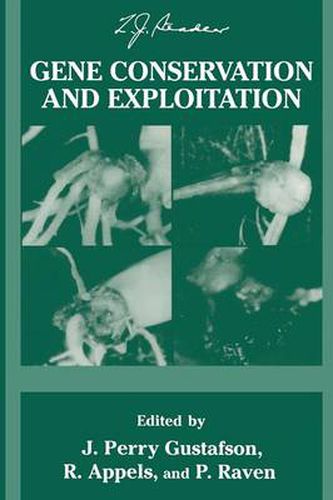Readings Newsletter
Become a Readings Member to make your shopping experience even easier.
Sign in or sign up for free!
You’re not far away from qualifying for FREE standard shipping within Australia
You’ve qualified for FREE standard shipping within Australia
The cart is loading…






This title is printed to order. This book may have been self-published. If so, we cannot guarantee the quality of the content. In the main most books will have gone through the editing process however some may not. We therefore suggest that you be aware of this before ordering this book. If in doubt check either the author or publisher’s details as we are unable to accept any returns unless they are faulty. Please contact us if you have any questions.
The potato (Solanum tuberosum L. ) tuber is a major food source in many countries of the world, and subsequently potato has been the target of a good deal of effort directed at engineering disease and herbicide tolerance, and improvements in various crop characteristics. Consequently investigations into the regulation of gene expression in tubers is relevant to these endeavours, as tubers are the main target organ for modification of gene expression. We have been interested in the regulation of genes in tubers for these reasons. Morphologically tubers are modified stems, which have enlarged radially by limited cell division and substantial expansion. At the molecular level, tuber development is characterised by a massive increase in starch deposition and the synthesis of a limited number of abundant proteins. These include proteinase inhibitors and a 40kd group of proteins called patatin, which are acyl hydrolases. Together these proteins account for over 50% of tuber proteins (reviewed by Bevan, 1991). The synthesis of these proteins has parallels to the synthesis of other somatic storage proteins, especially the VSP proteins of soybean. In both potato and soybean, removal of the sink for these proteins (tubers and pods, respectively) causes deposition in other tissues (Staswick, 1990). It is hypothesised that transcriptional control of the genes encoding these proteins is regulated in part by source-sink relationships of metabolites or other factors. In the case of VSPs, both amino acid levels and jasmonic acid play a major regulatory role (Staswick et aI.
$9.00 standard shipping within Australia
FREE standard shipping within Australia for orders over $100.00
Express & International shipping calculated at checkout
This title is printed to order. This book may have been self-published. If so, we cannot guarantee the quality of the content. In the main most books will have gone through the editing process however some may not. We therefore suggest that you be aware of this before ordering this book. If in doubt check either the author or publisher’s details as we are unable to accept any returns unless they are faulty. Please contact us if you have any questions.
The potato (Solanum tuberosum L. ) tuber is a major food source in many countries of the world, and subsequently potato has been the target of a good deal of effort directed at engineering disease and herbicide tolerance, and improvements in various crop characteristics. Consequently investigations into the regulation of gene expression in tubers is relevant to these endeavours, as tubers are the main target organ for modification of gene expression. We have been interested in the regulation of genes in tubers for these reasons. Morphologically tubers are modified stems, which have enlarged radially by limited cell division and substantial expansion. At the molecular level, tuber development is characterised by a massive increase in starch deposition and the synthesis of a limited number of abundant proteins. These include proteinase inhibitors and a 40kd group of proteins called patatin, which are acyl hydrolases. Together these proteins account for over 50% of tuber proteins (reviewed by Bevan, 1991). The synthesis of these proteins has parallels to the synthesis of other somatic storage proteins, especially the VSP proteins of soybean. In both potato and soybean, removal of the sink for these proteins (tubers and pods, respectively) causes deposition in other tissues (Staswick, 1990). It is hypothesised that transcriptional control of the genes encoding these proteins is regulated in part by source-sink relationships of metabolites or other factors. In the case of VSPs, both amino acid levels and jasmonic acid play a major regulatory role (Staswick et aI.